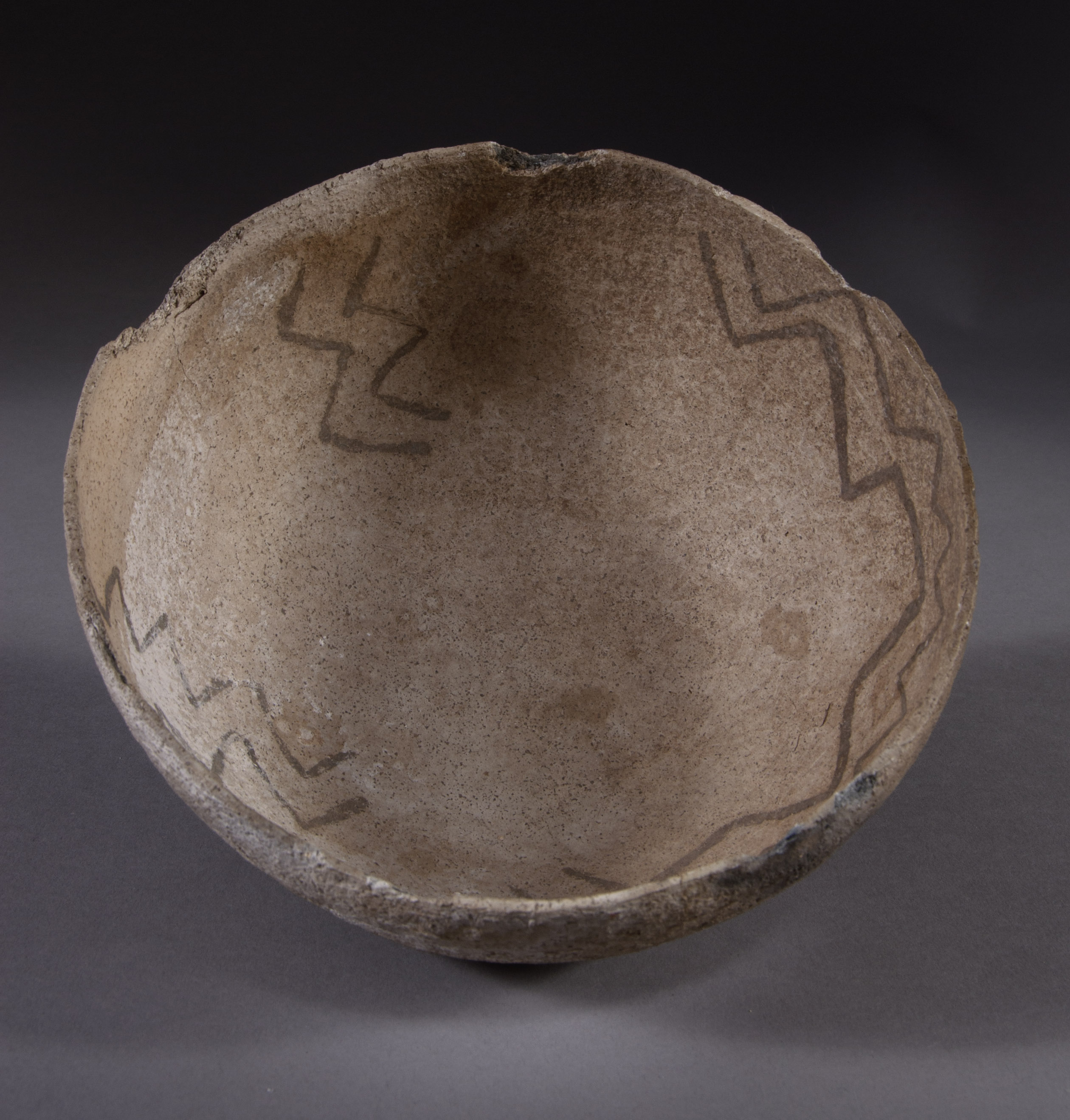Lino Black-on-gray is the only type of Tusayan Gray Ware with painted decorations. This type also had a widespread distribution and is found in southwestern Colorado, northwestern New Mexico, northern Arizona north of the Mogollon Rim, and in southern Utah east of the Colorado River.
Archaeological Culture: Ancestral Puebloan, Kayenta
Date Range: Kayenta Heartland: A.D. 640-820 (Christenson 1994), Flagstaff Area: A.D. 550-825 (per Christian Downum, Northern Arizona University).
Construction: By coiling.
Firing: In a reducing atmosphere.
Core Color: Usually dark gray or almost black, sometimes light gray.
Temper: Abundant medium-fine to coarse quartz sand; temper conspicuous on the vessel surface, less so on painted surfaces.
Surface Finish: Very roughly finished; scraped and occasionally lightly smoothed in spots on unpainted surfaces; almost always moderately smoothed on painted surfaces; not polished; never slipped; usually deeply pitted; scraping marks conspicuous.
Surface Color: Normally gray.
Forms: Bowls and jars.
Vessel Thickness: Vessel walls fairly uniform in thickness.
Decoration:
- Paint: Black, occasionally slightly brownish where thin.
- Pigments: Carbon.
- Design: Narrow lines, frequently ticked or fringed; often narrow bands framed by narrow lines containing two or more rows of small isolated dots (1-2 mm in diameter); designs crudely executed.
Comparisons: Kana’a Black-on-white is coated with a moderately heavy white slip, but has similar decorative elements with the addition of small solid triangles and lines in series. Deadmans Black-on-gray is constructed by paddling, has better executed designs and temper with mica-like particles, and well-smoothed surfaces lacking pitting and scoring.
Comments: Some ceramicists classify Lino Black-on-gray as Tusayan White Ware rather than Tusayan Gray Ware.
Other Names: Post-Basketmaker Ware, Post-Basketmaker Pottery, Basketmaker Black-on-white, Lino Black-on-white.
Compiled from the following sources:
Christenson, Andrew (1994) A Test of Mean Ceramic Dating Using Well-Dated Kayenta-Anasazi Sites. Kiva 59(3):297-317.
Colton, Harold S., and Lyndon L. Hargrave. (1937) Handbook of Northern Arizona Pottery Wares. Museum of Northern Arizona Bulletin 11, Flagstaff, Arizona.
Compiled by:
April Peters, Northern Arizona University Anthropology Laboratories.

